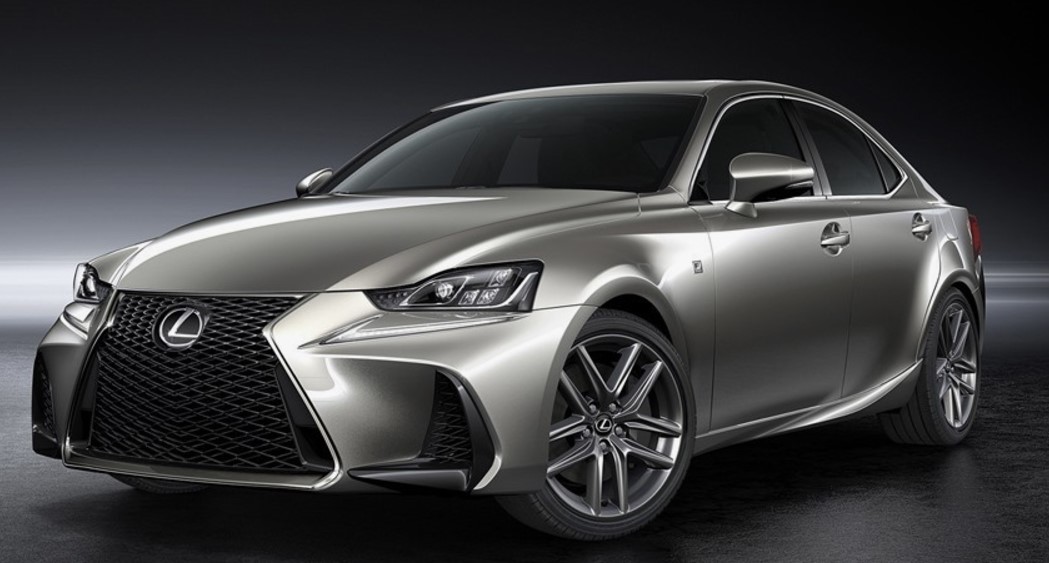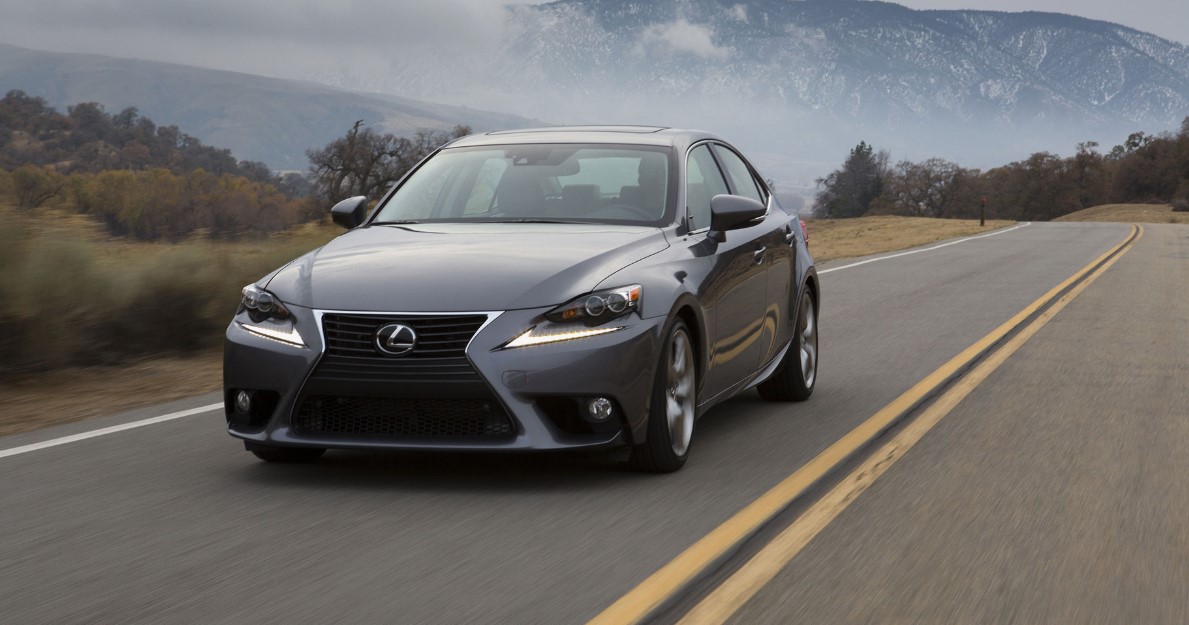The Lexus IS: A Comprehensive Evolution of Entry-Level Luxury and Performance

The Lexus IS represents the perfect blend of luxury and sporty performance in Lexus’ lineup. Designed to compete with renowned European sports sedans like the BMW 3 Series and Audi A4, the Lexus IS has carved out a distinctive identity since its inception. With its blend of dynamic handling and refined comfort, the Lexus IS has become a popular choice for car rental services, offering a premium driving experience for those seeking performance and luxury. This model has not only evolved in terms of engineering and design but also in its ability to offer a compelling alternative in the highly competitive luxury sedan market.
Origins: A Vision for Excellence
The Lexus IS traces its roots back to 1994, when Nobuyaki Katayama led a team of engineers to create a sedan that could challenge the dominance of European automakers in the compact luxury sports sedan segment. The team focused on crafting a vehicle that combined exceptional driving dynamics, stylish design, and Lexus’ hallmark reliability and luxury.
The foundation for the Lexus IS came from the Toyota Altezza, a right-hand-drive model introduced in 1998 for the Japanese domestic market. The Altezza quickly garnered critical acclaim, winning the Car of the Year Japan award for its innovative design, excellent handling, and advanced features. Leveraging the success of the Altezza, Lexus adapted the model for international markets, debuting the Lexus IS in 1999.
This adaptation marked the first time Lexus offered a “junior” sports sedan, designed for a younger, performance-focused audience. The IS shared the XE platform with the Altezza and retained much of its sporty DNA while incorporating the luxury refinements expected from Lexus.

First Generation (XE10): 1998–2005
The first generation Lexus IS debuted with a clear focus on sporty handling and a dynamic driving experience. Available in sedan and later SportCross (station wagon) configurations, the XE10 became popular for its sharp, driver-focused design and performance. Key highlights of the first generation include:
Engine Options: Powered by inline-six engines, the XE10 delivered smooth performance with ample power.
Interior Design: Featured unique elements like a chronograph-style instrument cluster, reflecting its sporty ambitions.
Market Impact: The IS offered an alternative to German competitors, especially for buyers seeking a more distinctive option without compromising reliability.
The addition of the SportCross station wagon in 2000 expanded the IS lineup, offering a more versatile option for customers needing additional cargo space without sacrificing performance.
Second Generation (XE20): 2005–2013
The second generation Lexus IS, launched in 2005, introduced significant advancements in styling, performance, and technology. The XE20 was an important step forward, offering two distinct body styles:
- Sedan
- Convertible (introduced in 2008)
Performance Enhancements
The second generation brought more powerful engine options, including the introduction of the IS 250 and IS 350, both featuring V6 engines. Lexus also unveiled the IS F, a high-performance variant equipped with a 5.0-liter V8 engine, delivering over 400 horsepower. The IS F solidified Lexus’ position in the high-performance luxury segment, directly competing with vehicles like the BMW M3 and Mercedes-Benz AMG C-Class.
Design Innovations
The XE20 embraced Lexus’ “L-finesse” design philosophy, characterized by flowing lines, a bold grille, and a refined yet aggressive stance. Inside, the cabin was meticulously crafted with premium materials and advanced technology, creating an environment that catered to both comfort and driver engagement.
Third Generation (XE30): 2013–2020
The third generation Lexus IS represented a significant leap forward in design and technology. Revealed in 2013, the XE30 introduced a more aggressive exterior styling, advanced powertrain options, and a host of new features:
Powertrain Diversity
IS 350 and IS 250: Powered by naturally aspirated V6 engines.
IS 200t: Featured a turbocharged 2.0-liter four-cylinder engine, offering improved fuel efficiency and responsive performance.
IS 300h: A hybrid option combining a gasoline engine with electric power for greater efficiency without compromising performance.
F Sport Variants
The F Sport trims provided sportier styling elements, an upgraded suspension, and dynamic handling features, further appealing to performance enthusiasts.
Interior Advancements
The third-generation IS interior was equipped with cutting-edge technology, including:
🡪A large infotainment display with touchpad controls.
🡪Premium audio systems, such as the Mark Levinson sound system.
🡪Enhanced driver-assistance systems.

Fourth Generation (XE40): 2020–Present
The fourth generation Lexus IS, launched in 2020, took the model’s evolution to new heights. While retaining its sporty DNA, the XE40 emphasized refinement, safety, and cutting-edge technology.
Design Highlights
The latest generation features a bolder and more refined exterior design, including:
🡪A prominent spindle grille.
🡪Sleek LED headlights with sharp daytime running lights.
🡪A wider stance for improved aerodynamics and stability.
Performance Updates
Lexus fine-tuned the chassis for better handling and driving dynamics. The IS now offers all-wheel drive in some configurations, enhancing its versatility in various driving conditions.
Innovative Technology and Features
The Lexus IS integrates advanced systems to enhance safety, comfort, and convenience:
Safety Technologies
- Blind Spot Monitoring: Warns of vehicles in adjacent lanes that may not be visible to the driver.
- Pre-Collision System (PCS): Detects potential collisions with vehicles or pedestrians and applies automatic braking if necessary.
- Active Bonnet System: Lifts the bonnet during a pedestrian collision to minimize injury.
- Dynamic Adaptive Cruise Control (DRCC): Maintains a safe following distance and adjusts speed automatically.
Luxury Features
Premium Leather Upholstery: Provides unmatched comfort and durability.
Climate Concierge: Adjusts temperature, seat heating/cooling, and steering wheel warmth automatically for optimal comfort.
Advanced Infotainment: Includes Apple CarPlay, Android Auto, and wireless charging.
Legacy and Market Position
The Lexus IS has remained a staple in the luxury sports sedan market due to its versatility, blending performance, luxury, and reliability. Over the years, it has attracted a loyal customer base, offering an alternative to European competitors while emphasizing dependability and cutting-edge innovation.
Global Appeal
The IS is particularly popular in markets like North America, Europe, and Asia, where buyers seek a balance of luxury and performance without compromising on long-term ownership costs.
Future Prospects
As Lexus continues to innovate, the IS is expected to evolve further, potentially integrating electrification and autonomous driving features. Its legacy as a versatile and reliable luxury sports sedan ensures its place in the Lexus lineup for years to come.
Conclusion
From its origins as a Toyota Altezza-based sports sedan to its current fourth-generation iteration, the Lexus IS has continually evolved to meet the demands of modern drivers. It stands as a testament to Lexus’ ability to combine luxury, reliability, and performance into a single package. Whether you’re drawn to its sporty driving dynamics, innovative features, or elegant design, the Lexus IS remains a benchmark in the compact luxury sedan segment.
Biker, shiba-inu lover, guitarist, Swiss design-head and multidisciplinary designer. Performing at the fulcrum of aesthetics and programing to create not just a logo, but a feeling. Let’s design a world that’s thoughtful, considered and aesthetically pleasing.

